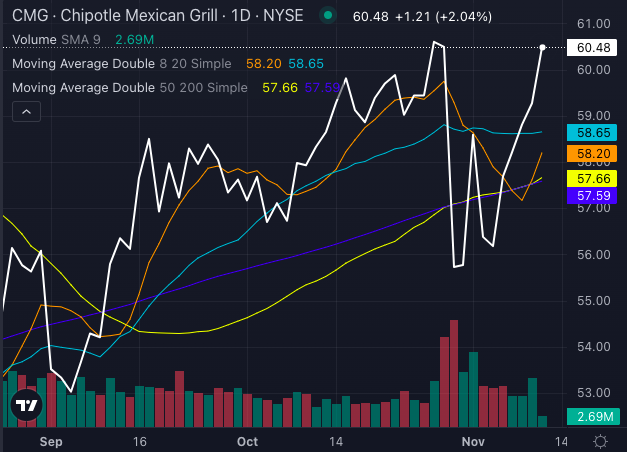Over the past three decades, investors have been enticed by various trends and innovations, yet none have had the impact of the internet on corporate America. However, the emergence of the artificial intelligence (AI) revolution has captured the attention of both professional and retail investors alike, with PwC analysts predicting a staggering $15.7 trillion addition to the global economy through AI by the end of the decade.
No company has capitalized more on the AI frenzy than Nvidia (NASDAQ: NVDA).

Image source: Getty Images.
The Unprecedented Rise of Nvidia
At the close of August 28, 2024, Nvidia was valued at $3.09 trillion, a significant leap from being a $360 billion enterprise at the start of 2023. It briefly held the position of the most valuable publicly traded company following its historic 10-for-1 stock split.
The surge in Nvidia’s value is attributable to the remarkable success of its H100 graphics processing unit (GPU), which became the go-to chip for AI-accelerated data centers. The company’s CUDA software platform has also played a critical role in maximizing the computing potential of GPUs, resulting in strong customer loyalty and unparalleled pricing power.
Despite six consecutive quarters of surpassing Wall Street’s expectations in sales and profits, a lesser-known performance metric now signals a potential downturn for Nvidia.
A Troubling Shift: First Sequential Decline in Two Years
While Nvidia exceeded revenue and earnings per share estimates for the fiscal second quarter, these figures only paint part of the picture. The company’s gross margin, particularly the adjusted metric that excludes certain expenses, provides a deeper insight into its trajectory.
During the fiscal first quarter, Nvidia achieved an astonishing adjusted gross margin of 78.35%, driven by its ability to command high prices for AI-GPUs. However, the company’s guidance for the second quarter indicated a potential decline to 75.5%, marking the first sequential quarterly downturn in adjusted gross margin in two years.
Following Nvidia’s fiscal second-quarter report, the adjusted gross margin indeed dropped by 320 basis points to 75.15%. While in line with the company’s forecast, the margin sits at the lower end of expectations, raising concerns about Nvidia’s future performance.
The fiscal third-quarter outlook introduces the possibility of further challenges, hinting at potential headwinds ahead for the once-ascendant Nvidia.
The Erosion of Nvidia’s Gross Margin: A Cautionary Tale
The Competitive Landscape and Historical Precedents
In a disheartening disclosure, Nvidia reported a forecast of a 75% adjusted gross margin, with fluctuations of up to 50 basis points. Despite standing substantially higher than it did a year and a half ago, the winds of change are clearly blowing against Nvidia.
Challenges on the Horizon
On one front, Nvidia’s surge in adjusted gross margins is largely attributed to AI-GPU scarcity and astronomical pricing power. However, this success is besieged on all sides. As AMD bolsters production of its MI300X, free from the supply shackles binding Nvidia to Taiwan Semiconductor Manufacturing, the erstwhile scarcity of AI-GPUs is dissipating, gnawing away at Nvidia’s pricing hegemony.
Moreover, Taiwan Semiconductor is expanding its CoWoS capacity, crucial for fabricating the high-bandwidth memory indispensable in AI-driven data centers. This expansion forebodes escalating production costs for Nvidia, portending further strife.
Internally, Nvidia faces upheaval as well. Its biggest clients, part of the “Magnificent Seven,” are crafting in-house AI-GPUs to power their data centers. Even with superior hardware like the H100 and Blackwell GPUs, they risk losing ground to proprietary alternatives, imperiling Nvidia’s foothold in prime data center real estate.
Historical Parallels and Teetering Fortunes
Compounding these dilemmas is historical precedent. Over the past three decades, no nascent technology has skirted the perilous bubble that often marks its infancy. The path to maturity is a meandering one, and artificial intelligence seems destined to follow suit.
Despite Nvidia’s buoyant sales to top clients, an air of uncertainty looms large. The majority of businesses investing in AI lack a coherent strategy. Even Meta Platforms, a key Nvidia customer, shows no urgency in monetizing its AI ventures.
A Grim Outlook
The confluence of nebulous direction and a shrinking adjusted gross margin paints a bleak picture for Nvidia. Experts contend that the zenith of Nvidia’s stock has come and gone.
Before wagering on Nvidia’s future, ponder this: the Motley Fool Stock Advisor team, renowned for identifying lucrative investments, excluded Nvidia from its curated list of the “10 best stocks” poised for stellar returns. This omission underscores the potentially brighter prospects awaiting those wise enough to invest beyond Nvidia.
Reflect on the past when Nvidia last graced the list on April 15, 2005. A $1,000 investment then would have blossomed into a staggering $769,685, exemplifying the transformative power of informed investing.
Stock Advisor, heralded for its sage investment advice, has outstripped the S&P 500’s returns by an astonishing margin since 2002.
Select shares prudent in the present, not past shadows. Venture forth with eyes open to emerging opportunities beyond the realms of Nvidia’s declining fortunes.
*Stock Advisor returns as of August 26, 2024



